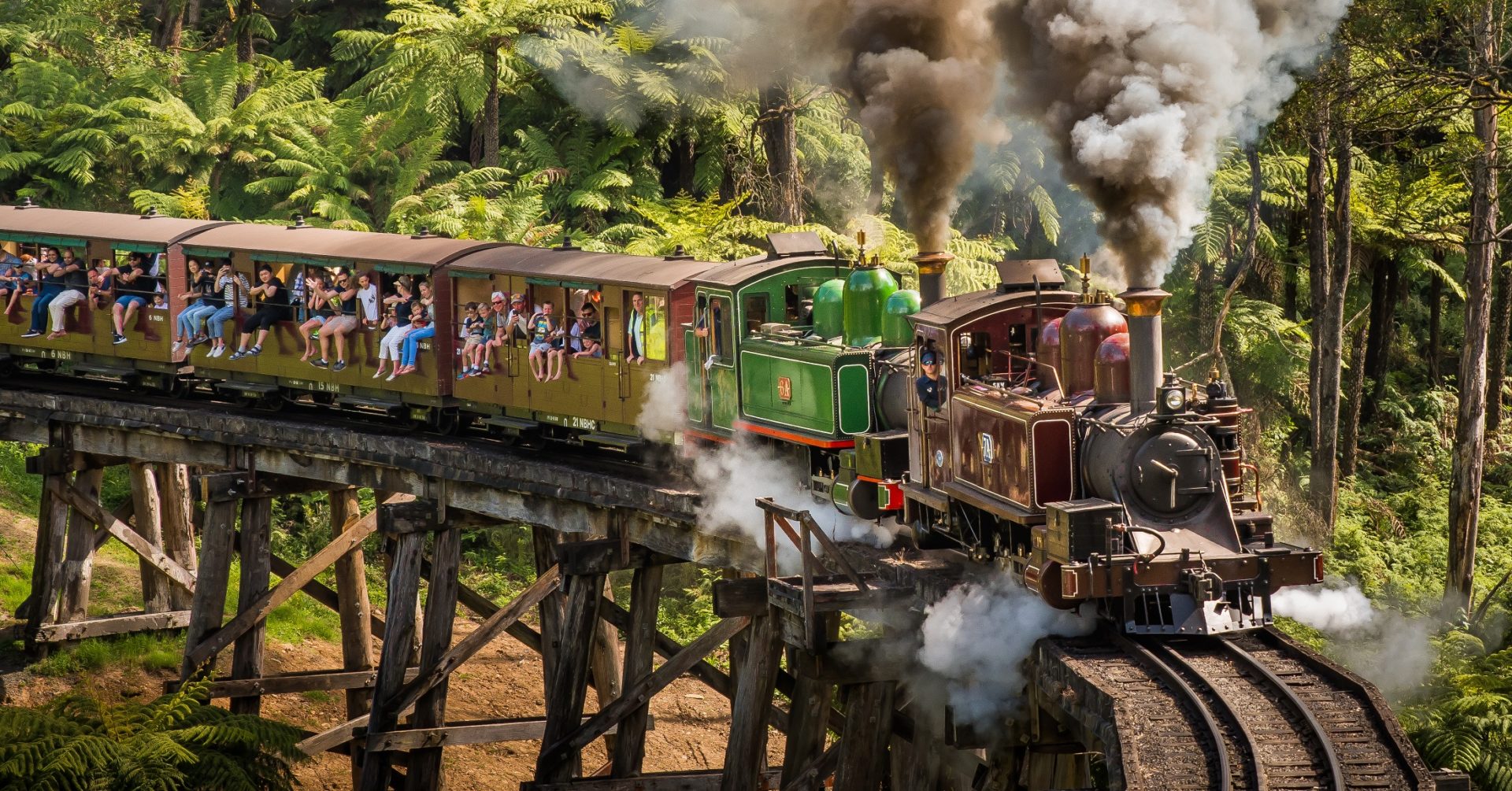
The oldest railway in continuous use is the Tanfield Railway in County Durham, England. Began its journey in 1725 as a wooden waggonway worked with horse power and developed by private coal owners and included the construction of the Causey Arch, the world’s oldest purpose built railway bridge.
Railways in Australia date from the 10 December 1831 when the Australian Agricultural Company officially opened Australia’s first railway, located at the intersection of Brown and Church Streets, Newcastle, New South Wales. Privately owned and operated to service the A Pit coal mine, it was a cast iron fishbelly rail on an inclined plane as a gravitational railway.

And in Melbourne, there is Puffing Billy Railway (see image below) for the tourists and families with children wanting to experience a piece of Australian Train History.

Let’s fast-forward to 2025, as you know, Australia is growing rapidly. Dynamics of transportation (be it air, sea, road freight, electric vehices) is changing around the world due to many factors, one being globalisation and advancement of technology. Here at Movement Engineering, we believe all of these changes offer us Australians great opportunities.
If you’ve been on The Vienna U-Bahn (underground railway) rapid transit system serving Vienna, Austria, you would have realised the importance of investing in engineering projects that move people, effeciently. The Vienna U-Bahn is a five-line network consists of 83.1 kilometers of route, serving 109 stations, and nearly 500 million passengers rode the U-Bahn in 2020.
Australia has a long and complicated history with high-speed rail, one may even say that we live on a vast continent therefore its not feasable to invest in high-speed rail network across Australia connecting major cities and rural communities. Accordingly, most government officials seem reluctant to take on potential projects even though most industry experts and businesses inform the government about the need for high-speed rail network, and better transport systems in Australia.
Basically, we’re not suggesting that Australians need a bullet train like Shinkansen in Japan but what we do need is a vision for the future, a through planning, investment and commitment by the government so that we are all ready for the future of change.
High-speed Rail Plans Seems to Be Always Moving Forward in to the Future
The Australian Government is planning for a future high speed rail network to connect Brisbane, Sydney, Canberra, Melbourne and regional communities across the east coast of Australia. A new system will allow trains to reach speeds of up to 320km per hour, and the services potentially would have cut travel times by up-to 50%. We hope this project will see the light of day and not be scrapped like similar proposed projects in the past.
Today, we explore the critical importance of investing in efficient rail networks and how it can transform the lives of people and businesses across Australia, particularly in key cities like Brisbane Queensland, Sydney NSW, and Melbourne Victoria.
Why Efficient Rail Networks Matter
Efficient rail networks are the backbone of a sustainable and thriving economy. They provide a reliable, cost-effective, and environmentally friendly mode of transportation for both passengers and freight. Here’s why investing in future ready rail infrastructure is essential in Australia:
- Sustainability: Rail transport produces significantly lower carbon emissions compared to road and air transport, making it a key component in combating climate change.
- Economic Growth: Improved rail networks enhance connectivity, reduce travel times, and lower logistics costs, fostering economic development.
- Urban Development: Efficient rail systems support urban growth by reducing traffic congestion and improving accessibility to key areas (especially important for growing rural communities needing access).
- Safety: Modern rail systems are designed with advanced safety features, ensuring a secure mode of transport for passengers and goods alike.
Benefits for People and Businesses in Australia
Australia’s major cities, including Brisbane, Sydney, and Melbourne, stand to gain immensely from investments in rail infrastructure. Here’s how:
Brisbane, Queensland
Brisbane is experiencing rapid population growth, placing increasing pressure on its transportation systems. Investing in efficient rail networks can:
- Reduce traffic congestion on major roads and highways.
- Improve connectivity between Brisbane’s CBD and surrounding suburbs.
- Support the growth of industries by enabling faster and more reliable freight services.
Sydney, New South Wales
As Australia’s largest city, Sydney faces significant challenges in managing its transportation needs. Enhanced rail networks can:
- Alleviate overcrowding on existing public transport systems.
- Provide faster and more efficient travel options for commuters.
- Boost tourism by improving access to key attractions and regional areas.
Can you imagine the transport system in Sydney in 2025 without Sydney Harbour Tunnel?
Melbourne, Victoria
Melbourne’s rail network is one of the busiest in the country. Strategic investments can:
- Enhance the capacity and reliability of suburban and regional rail services.
- Support the city’s goal of becoming a global leader in sustainable urban living.
- Facilitate the movement of goods to and from the Port of Melbourne, strengthening trade and commerce.
How Movement Engineering Can Help
At Movement Engineering, we are committed to delivering innovative solutions that drive the development of efficient rail networks. Our services include:
- Engineering Design: Tailored designs that meet the unique needs of each project.
- Testing and Commissioning: Ensuring systems are safe, reliable, and ready for operation.
- Documentation: Comprehensive documentation to support project delivery and compliance.
- Hardware & Software Integration: Seamless integration of advanced technologies for optimal performance.
- Project Management: Expert management to ensure projects are delivered on time and within budget.
At Movement Engineering, we specialise in delivering cutting-edge solutions for rail networks. Our expertise and dedicated team with vast knowledge offers rolling stock engineering design, testing and commissioning, documentation, hardware and software integration services, project management. By partnering with Movement Engineering, governments and businesses can unlock the full potential of rail networks, creating a brighter future for Australia’s cities and regions.


No comment yet, add your voice below!